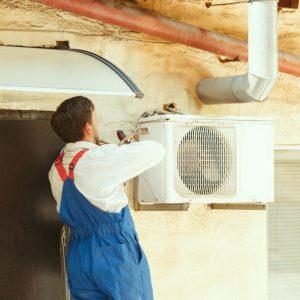Table of Contents
A furnace that isn’t running correctly isn’t just an inconvenience; it’s a health and safety concern. You don’t want your furnace to stop working when the temperatures plummet below zero or to put your family at risk of carbon monoxide poisoning.
Major signs you need a furnace repair
Fortunately, there are many signs of an impending furnace issue if you know what to watch for. Here are six signs you need a furnace repair as soon as possible.
Short cycling
When your furnace kicks in and heats your home, it goes through a cycle. Short cycling is the term used when your furnace turns off before the cycle is complete. Listen to your furnace as it starts up. There should be a transition from heating to blowing air. If your furnace shuts off before it starts blowing air, it’s short cycling.
This issue is a telling sign that it’s time for a furnace repair appointment. Fortunately, short cycling tends to be an easy fix. Some of the common causes for this issue include:
- A faulty flame sensor
- Built-up grime and dust
- Blocked vents or grates
- Overheating
- Improper sizing for your home
Scheduling an annual tune-up will help prevent short cycling. It’s integral to fix this problem as soon as possible, as it draws extra power and shortens the lifespan of your furnace.
Increased moisture in home
Your furnace is a part of your home’s HVAC system, which deals with heating, ventilation, and air conditioning. Increased moisture in the house could stem from a few problems: a leak in the roof, a faulty ventilation system, or a faulty furnace.
Excess condensation occurs when there’s inadequate airflow through your home. If you notice this change, check the attic for excess moisture, then call an HVAC specialist to come to take a look.
Inconsistent temperature
A functional furnace should heat the entire house consistently. If you notice cold spots or temperature fluctuations, there’s likely a problem with the furnace. Some homeowners also notice that the thermostat doesn’t match the feel of the air around them.
These problems indicate that your furnace isn’t heating sufficiently. Scheduling a furnace repair will correct the problem, at least temporarily. Depending on your furnace’s age, the technician may recommend replacing everything.
New furnace prices vary based on the type of system, size of the house, and fuel type. With proper care, a furnace should last at least 20 years, if not more.
Strange sounds
If your furnace starts making a racket every time it kicks in, there’s likely something loose or detached inside. Again, this tends to be an easy fix, but it’s essential to deal with it before it becomes a huge problem.
During an annual tune-up appointment, the furnace technician will check all the connectors and tighten any loose parts. Loose connections can impact how well the furnace runs or cause more significant damage over time.
Changes in burner flame
Changes in the burner flame intensity or color are indicative of a serious issue. Unfortunately, most people don’t notice this change until another problem inspires them to look at the furnace.
Your burner flame should be a bright, bold blue color. If it’s yellow or barely burning, turn off the furnace and call a repair service immediately. The diminished flame indicates that the furnace isn’t using fuel correctly, and could lead to increased carbon monoxide levels in your home. Carbon monoxide is colorless, odorless, and deadly.
Heating bill increases inexplicably
If your heating bill starts increasing for now discernable reason, it’s time to call a furnace repair specialist. Rising utility bills indicate that the furnace is working harder than it should and becoming inefficient. Scheduling a furnace repair appointment will tell you if the problem can be corrected, or if it’s time for an upgrade. Regardless, the appointment will pay for itself in saved utility costs.
Final words
Scheduling an annual tune-up appointment is the best preventative measure you can take for keeping your furnace functional. Start this annual home maintenance routine before your furnace becomes a problem.




